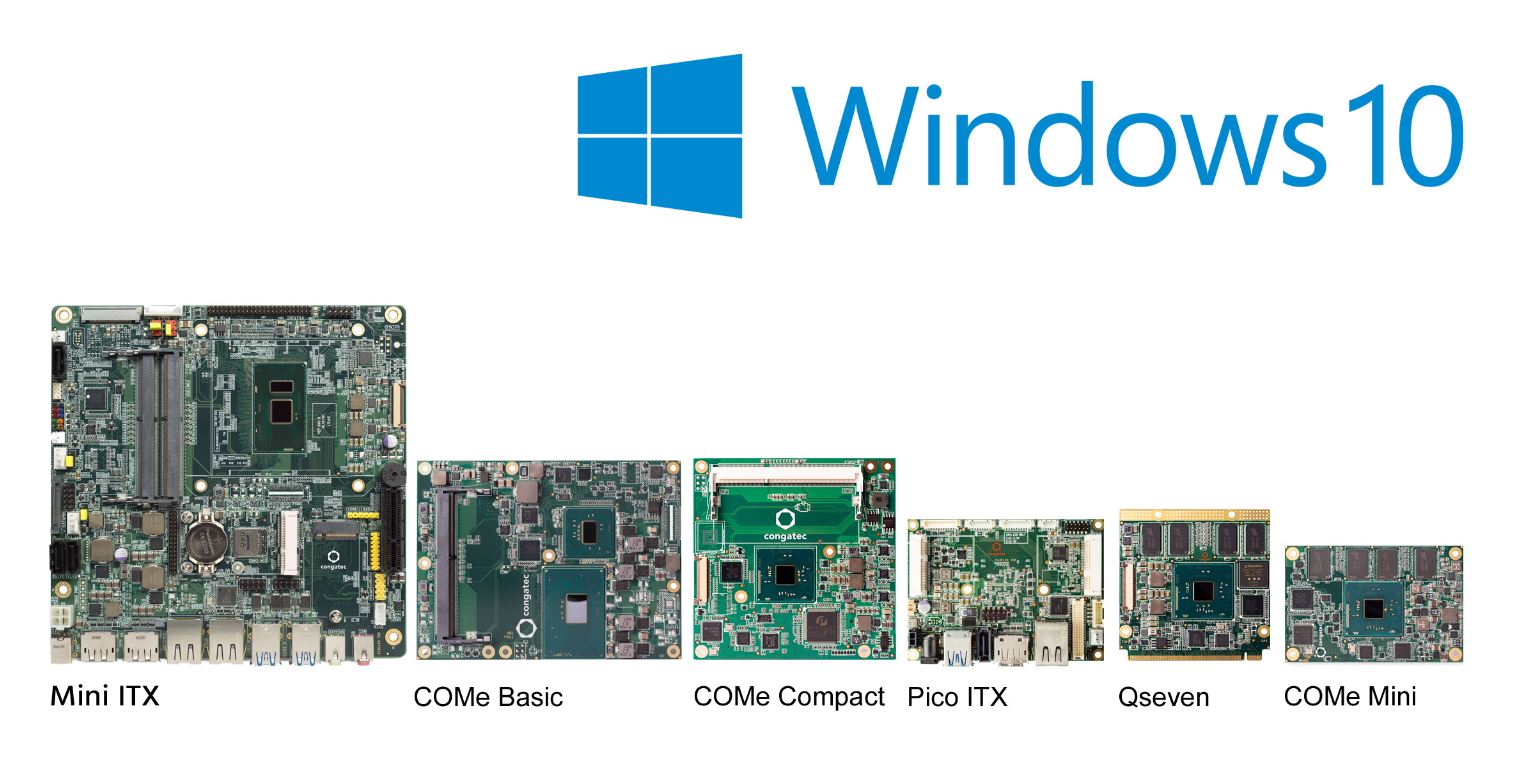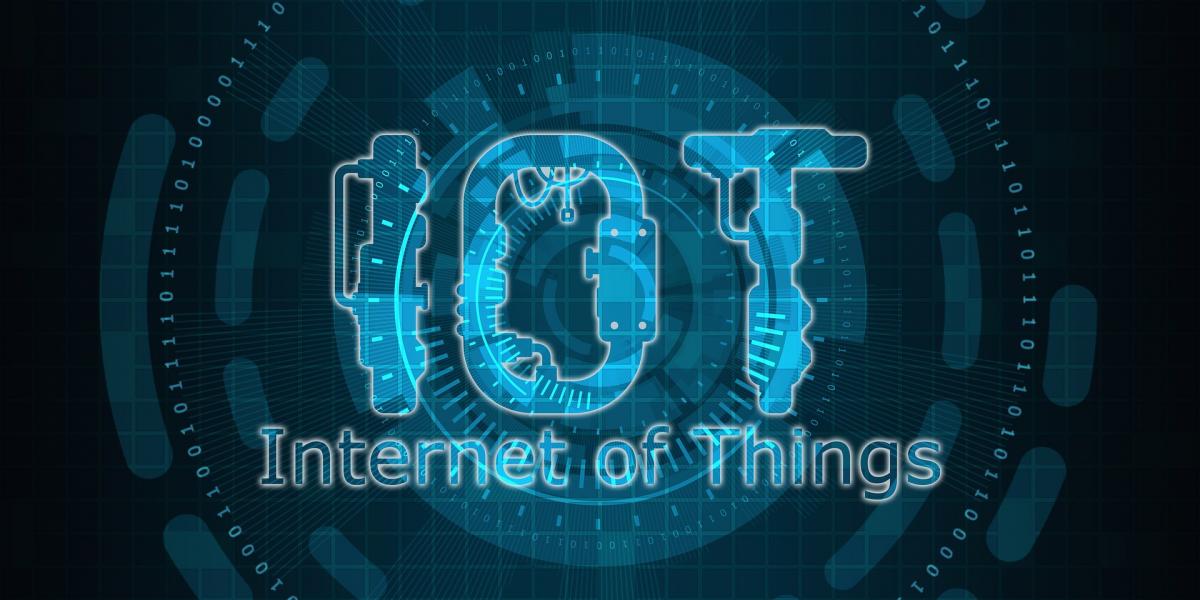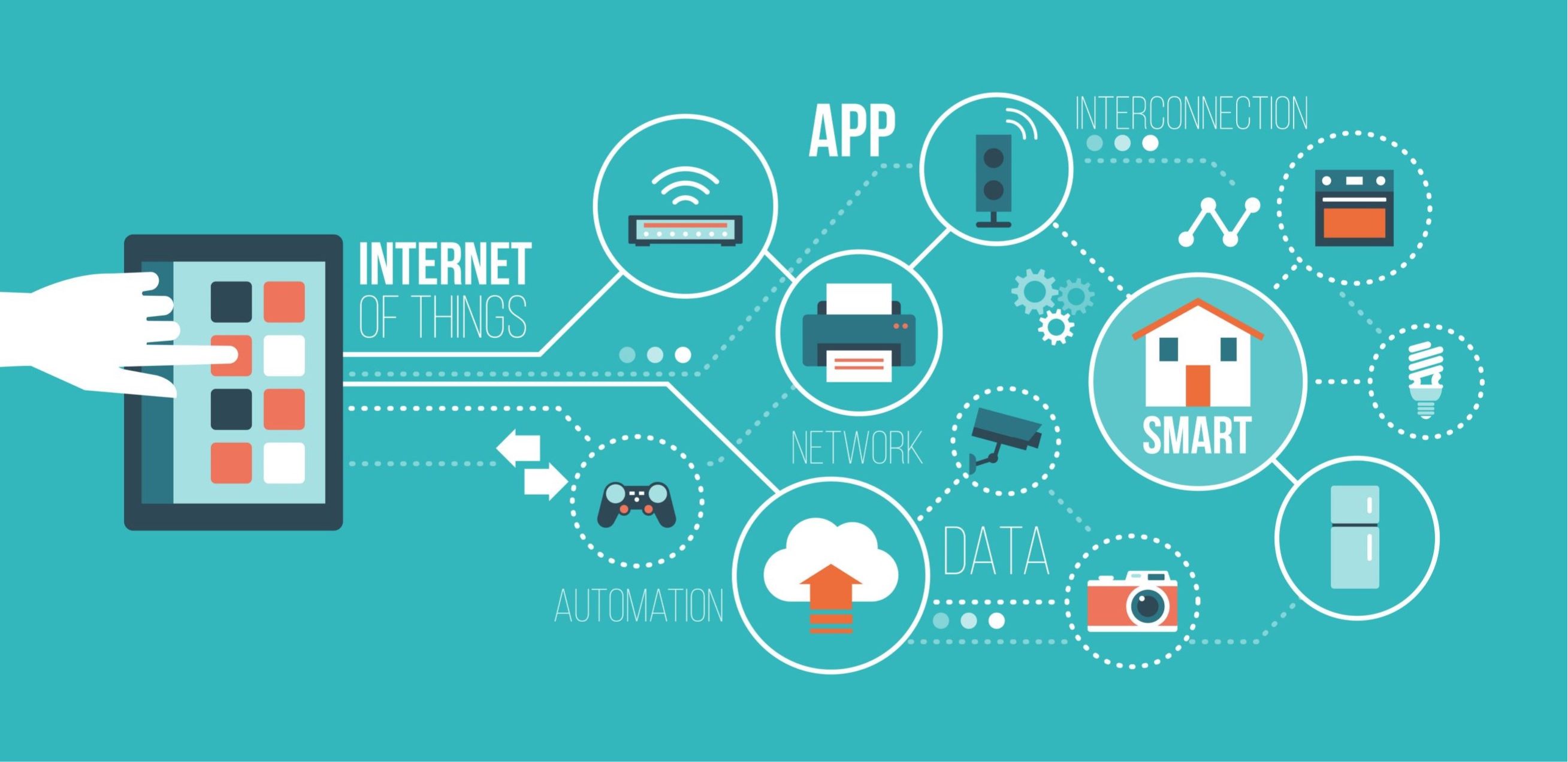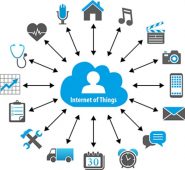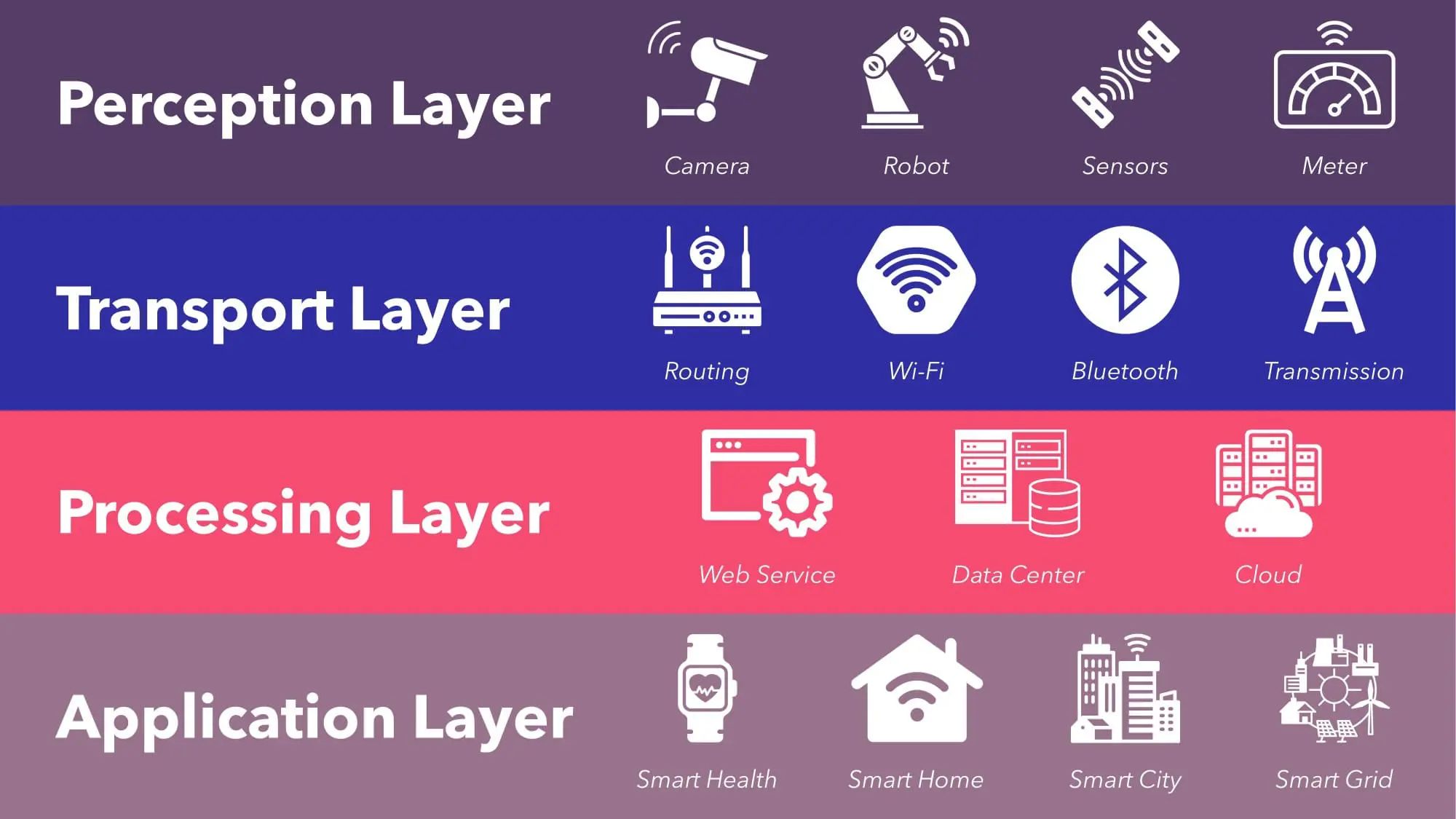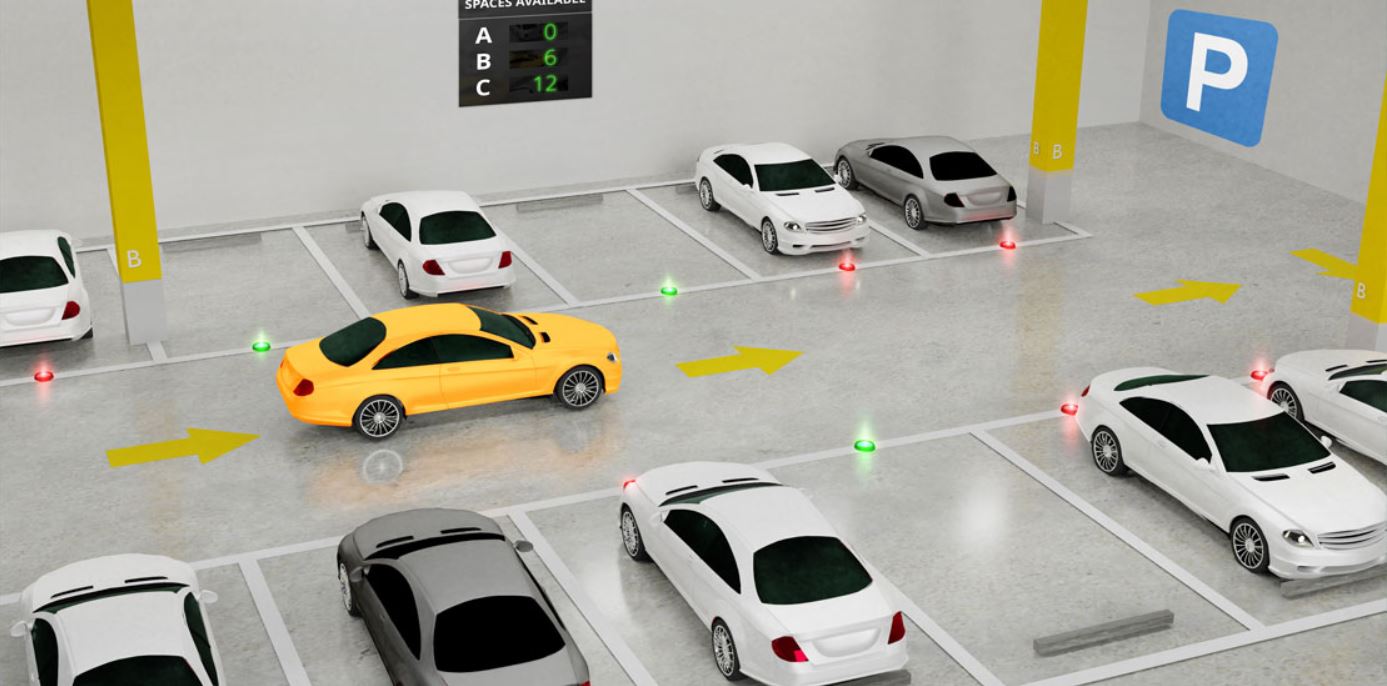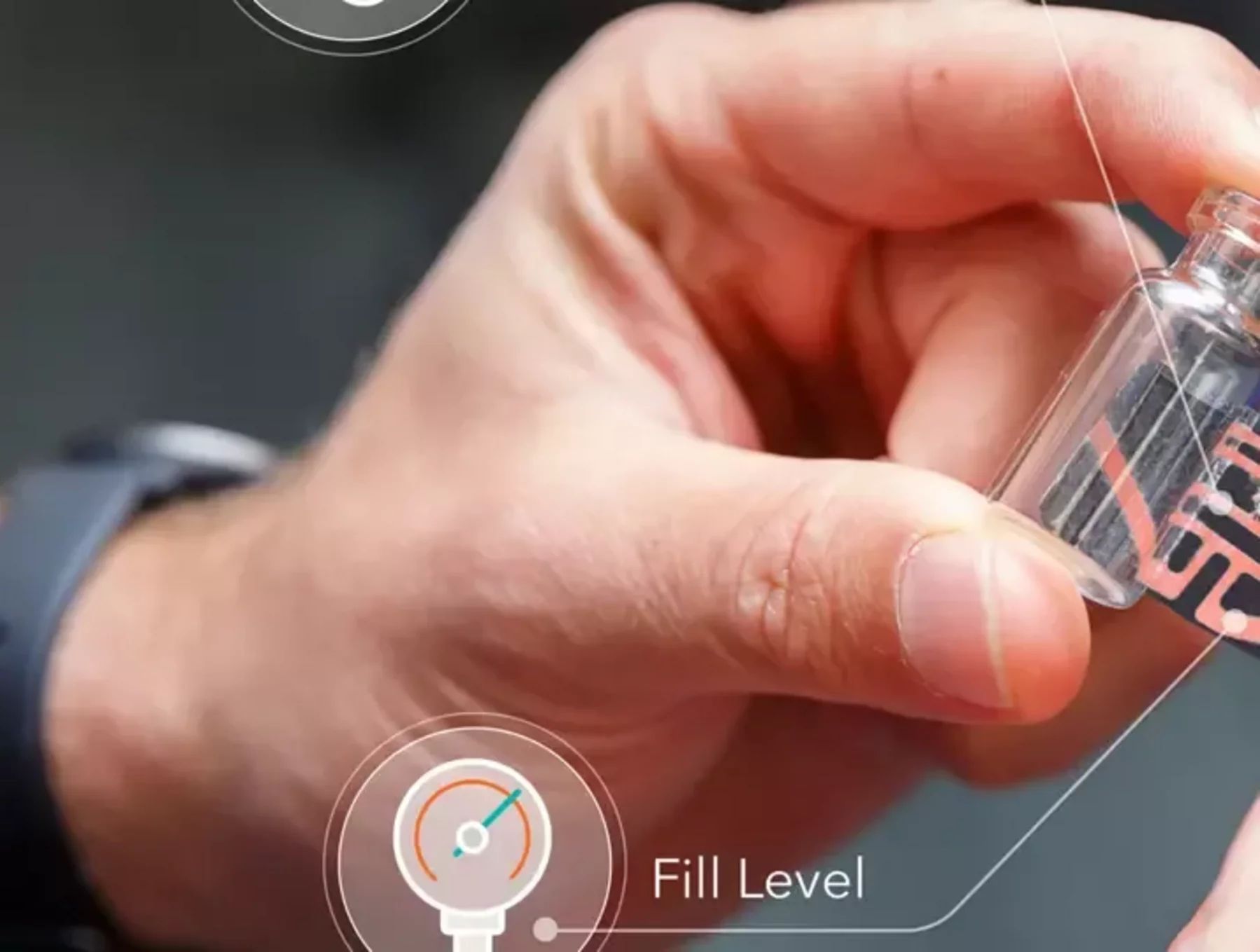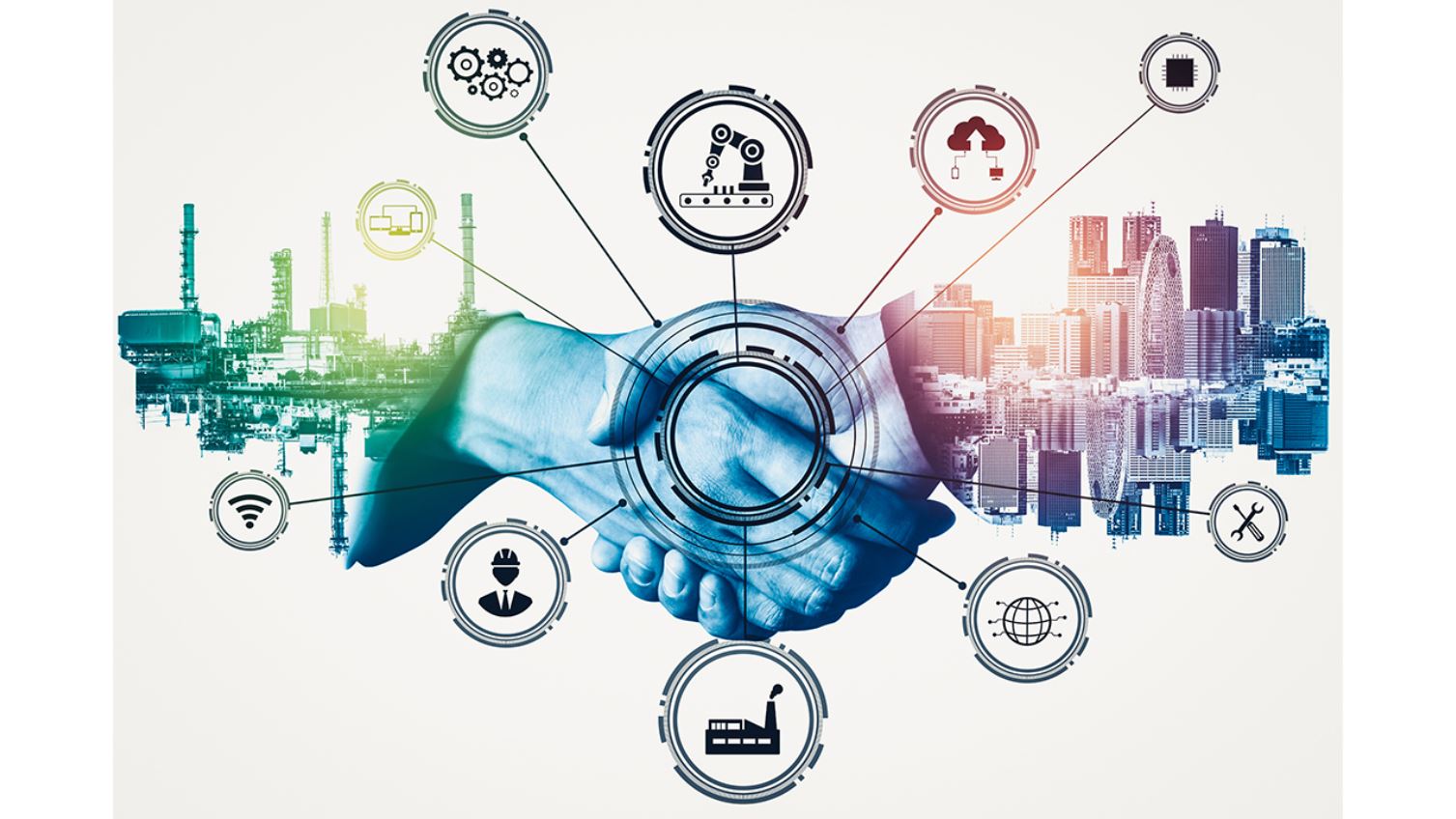Introduction
The Internet of Things (IoT) has revolutionized the way we interact with technology and has transformed the world around us. With the rapid advancement of technology, IoT solutions have become increasingly popular across various industries. But what exactly is an IoT solution and why is it so important?
An IoT solution refers to the integration of devices, sensors, and software applications to collect and exchange data over the internet. These connected devices are embedded with unique identifiers, allowing them to communicate and share information with one another without human intervention. This interconnectedness enables businesses and organizations to gather valuable insights, improve decision-making processes, and enhance operational efficiency.
The main purpose of an IoT solution is to connect various devices and systems, enabling them to work in harmony and effectively communicate with each other. This connectivity extends beyond traditional devices like smartphones and computers, encompassing a wide range of objects such as household appliances, vehicles, industrial machinery, and even wearable devices. By leveraging IoT solutions, organizations can harness the power of automation, data analytics, and real-time monitoring to optimize their processes and deliver better services to their customers.
The potential benefits of implementing an IoT solution are vast. For businesses, it offers improved efficiency, reduced costs, and increased productivity. With the ability to monitor and control devices remotely, companies can optimize their operations, identify bottlenecks, and proactively address issues before they escalate. Additionally, IoT solutions enable organizations to gather and analyze large volumes of data, allowing for informed decision-making and the identification of new revenue streams.
Moreover, IoT solutions have a profound impact on various industries. In healthcare, connected medical devices and wearables play a vital role in remote patient monitoring, enabling better patient care and reducing hospital readmissions. In agriculture, IoT solutions help monitor soil conditions, track livestock, and optimize irrigation, leading to increased yields and reduced resource wastage. Smart cities leverage IoT solutions to enhance public safety, manage traffic congestion, and improve energy efficiency.
The components of an IoT solution may vary depending on the specific use case, but typically include interconnected devices, cloud infrastructure, data analytics tools, and user interfaces. These components work together to facilitate data collection, storage, analysis, and visualization, enabling organizations to derive actionable insights and make data-driven decisions.
While implementing an IoT solution brings various benefits, it is not without its challenges. Security and privacy concerns surrounding the large-scale collection and sharing of data pose significant risks. Interoperability between different devices and systems from various manufacturers can also be a challenge, requiring standardization and compatibility measures.
Overall, IoT solutions have the potential to transform industries, drive innovation, and improve our daily lives. By harnessing the power of connectivity and data, organizations can unlock new opportunities and drive sustainable growth. In the following sections, we will explore the benefits, industries using IoT solutions, components, challenges, and best practices for implementing successful IoT solutions.
What is IoT Solution?
An IoT solution is a comprehensive framework that enables the seamless integration of various devices, sensors, and software applications, allowing them to connect and communicate with each other over the internet. It involves the use of embedded technology and unique identifiers to collect, transmit, and analyze data, leading to valuable insights and enhanced operational efficiency.
At its core, an IoT solution encompasses three main components: devices, connectivity, and data analytics. The devices can range from simple sensors to complex systems, each equipped with the ability to sense, collect, and transmit data. Connectivity refers to the infrastructure that allows these devices to communicate with each other and with cloud-based platforms. The data generated by these devices is then processed and analyzed using advanced analytics tools, providing actionable insights for decision-making.
In an IoT solution, devices are embedded with sensors that capture real-time data, such as temperature, humidity, pressure, location, or movement. These sensors then transmit this data to a central hub or cloud-based platform, where it is processed and analyzed. The data generated is then transformed into meaningful information, enabling organizations to make informed decisions, optimize operations, and improve customer experiences.
The applications of IoT solutions are vast and span across multiple industries. In manufacturing, IoT solutions enable predictive maintenance, real-time monitoring of equipment, and optimization of production processes. In transportation and logistics, IoT solutions improve fleet management, track shipments, and enhance supply chain visibility. In healthcare, IoT solutions facilitate remote patient monitoring, smart hospitals, and personalized medicine. The possibilities are virtually limitless.
Furthermore, IoT solutions have enabled the emergence of smart homes and smart cities. In a smart home, IoT devices like smart thermostats, lighting systems, and security cameras can be controlled remotely, enhancing energy efficiency, convenience, and security. In smart cities, IoT solutions are leveraged to manage traffic flow, monitor air quality, optimize waste management, and improve overall urban sustainability.
One of the key benefits of IoT solutions is the ability to gather and analyze large volumes of data. This data provides valuable insights into consumer behavior, operational trends, and market demands. With this knowledge, organizations can make data-driven decisions, tailor their offerings, and deliver personalized experiences to customers.
Overall, an IoT solution combines hardware, software, and connectivity to create an ecosystem of connected devices that can seamlessly exchange data and enable intelligent decision-making. It has the potential to transform industries, improve efficiency, and enhance the quality of life for individuals and communities. By embracing IoT solutions, businesses can gain a competitive edge, drive innovation, and unlock new opportunities for growth and success.
Benefits of IoT Solution
The implementation of an IoT solution offers numerous benefits for organizations across various industries. By leveraging the power of connectivity and data, businesses can gain a competitive edge and drive innovation. Let’s explore some of the key advantages of adopting an IoT solution:
- Increased Efficiency: IoT solutions enable organizations to streamline their processes and improve efficiency. With real-time monitoring and automation, businesses can optimize resource utilization, reduce downtime, and minimize manual intervention. This leads to cost savings, improved productivity, and enhanced operational effectiveness.
- Enhanced Decision-Making: IoT solutions provide businesses with access to a wealth of data that can be analyzed to derive actionable insights. With advanced analytics tools, organizations can make informed decisions based on real-time information. This empowers them to identify patterns, predict trends, and proactively address issues before they escalate.
- Improved Customer Experience: IoT solutions enable businesses to personalize their offerings and provide a superior customer experience. By understanding customer behavior and preferences through data analysis, organizations can tailor their products and services to meet individual needs. This leads to higher customer satisfaction, loyalty, and increased revenue.
- Cost Reduction: IoT solutions help businesses optimize their operations, leading to cost savings. By monitoring equipment performance and asset utilization, organizations can identify inefficiencies and make data-driven decisions to minimize expenses. Predictive maintenance and remote monitoring also reduce maintenance costs and extend the lifespan of assets.
- Improved Safety and Security: IoT solutions enhance safety and security across various domains. In industries such as manufacturing and construction, IoT sensors can detect hazardous conditions and trigger alerts, mitigating potential risks and ensuring worker safety. With IoT-enabled surveillance systems, businesses can monitor premises, detect unauthorized access, and respond promptly to security threats.
- Optimized Supply Chain: IoT solutions enable real-time tracking of inventory, assets, and shipments throughout the supply chain. This visibility helps businesses optimize logistics, reduce stockouts, and improve demand forecasting. With IoT-enabled sensors, organizations can also monitor conditions like temperature and humidity during transportation, ensuring the quality and integrity of products.
- Sustainable Practices: IoT solutions contribute to sustainability efforts by enabling better resource management. By monitoring energy consumption, organizations can identify inefficiencies and implement energy-saving measures. IoT-enabled agriculture helps optimize water usage, reduce pesticide applications, and increase crop yields. Smart city projects leverage IoT solutions to optimize energy usage, reduce waste, and enhance overall environmental sustainability.
These are just a few of the many benefits that organizations can experience by implementing an IoT solution. The ability to gather, analyze, and act upon data in real-time has the potential to revolutionize industries and drive transformative change. By embracing IoT solutions, businesses can stay ahead of the competition, improve operational efficiency, and meet the ever-changing demands of the digital era.
Industries Using IoT Solution
The adoption of IoT solutions is prevalent across a wide range of industries, driving transformation and revolutionizing traditional practices. Let’s explore some of the key industries that are leveraging IoT solutions to enhance their operations:
- Manufacturing: Manufacturing companies are using IoT solutions to optimize production processes, improve efficiency, and reduce downtime. By deploying IoT-enabled sensors on machinery, manufacturers can monitor performance, detect anomalies, and implement predictive maintenance strategies. These solutions enable real-time data collection, analysis, and visualization, facilitating proactive decision-making and continuous improvement.
- Healthcare: The healthcare industry is embracing IoT solutions to deliver improved patient care, remote monitoring, and personalized medicine. IoT-enabled medical devices and wearables help monitor vital signs, collect patient data, and transmit this information to healthcare professionals in real-time. This allows for remote patient monitoring, early detection of health issues, and timely intervention. IoT solutions also enhance hospital efficiency, asset tracking, and inventory management.
- Retail: IoT solutions have revolutionized the retail industry, providing a seamless and personalized customer experience. Smart shelves, beacons, and RFID technology enable real-time inventory management, reducing stockouts and optimizing replenishment. IoT solutions also facilitate targeted marketing campaigns, leveraging customer data and preferences to deliver personalized promotions and recommendations. Additionally, smart checkout systems and digital signage enhance the overall shopping experience.
- Agriculture: IoT solutions are transforming the way agriculture is practiced, enabling precision farming, optimized resource usage, and improved crop yield. IoT sensors and devices monitor soil moisture, temperature, and nutrient levels, helping farmers make data-driven decisions for irrigation and fertilization. Livestock monitoring devices track animal health, behavior, and location, enabling proactive disease detection and efficient herd management. Through IoT solutions, agriculture becomes more sustainable, efficient, and environmentally friendly.
- Transportation and Logistics: IoT solutions are reshaping the transportation and logistics industry, fostering optimized supply chain management, and improving operational efficiency. IoT-enabled sensors track shipments, monitor temperature and humidity levels, and provide real-time visibility throughout the logistics process. GPS tracking ensures accurate vehicle routing and on-time deliveries, while predictive maintenance helps reduce downtime and enhance fleet management. These solutions result in improved customer satisfaction, reduced costs, and enhanced overall logistics performance.
- Energy and Utilities: IoT solutions are instrumental in the energy and utilities sector, enabling efficient energy management, grid optimization, and asset monitoring. Smart meters and sensors provide real-time energy consumption data, allowing consumers and utility companies to optimize usage and reduce wastage. IoT solutions also facilitate predictive maintenance of critical infrastructure, such as power plants and distribution systems, ensuring uninterrupted service and preventing costly breakdowns.
- Smart Cities: IoT solutions play a vital role in the development of smart cities, making urban spaces more livable, sustainable, and efficient. Connected sensors monitor air quality, traffic congestion, waste management, and parking availability, providing data-driven insights to city planners. Smart lighting, public safety systems, and energy management solutions enhance public safety and optimize resource usage. By leveraging IoT solutions, cities are becoming more resilient, environmentally friendly, and technologically advanced.
These are just a few examples of the industries benefiting from IoT solutions. The applications of IoT extend to sectors such as education, finance, hospitality, and more. With the potential to optimize processes, improve decision-making, and enhance customer experiences, IoT solutions continue to shape and transform industries, driving innovation and paving the way for a smarter and more connected future.
Components of an IoT Solution
An IoT solution comprises various interconnected components that work together to create a seamless and integrated system. These components enable the collection, transmission, analysis, and visualization of data, allowing organizations to derive actionable insights and make informed decisions. Let’s explore the key components that make up an IoT solution:
- Devices and Sensors: Devices and sensors are at the heart of an IoT solution. These hardware components are equipped with sensors that capture real-time data such as temperature, humidity, motion, or location. They can range from small sensors embedded in everyday objects to more complex devices like industrial machinery or wearable devices. These devices collect data and send it to a central hub or cloud-based platform for further processing and analysis.
- Connectivity: Connectivity is crucial for the seamless transfer of data in an IoT solution. It involves the infrastructure that enables devices to communicate with each other and with the cloud-based platforms. Various connectivity options exist, including Wi-Fi, cellular networks, Bluetooth, and Low-Power Wide-Area Networks (LPWANs). The choice of connectivity depends on factors such as range, data transfer speed, power consumption, and cost.
- Cloud Infrastructure: The cloud plays a critical role in an IoT solution. Cloud infrastructure allows for the storage, processing, and analysis of vast amounts of data generated by connected devices. Cloud platforms provide the scalability and flexibility needed to handle the massive data volumes, ensuring that the IoT system can adapt to changing demands. The cloud also enables real-time data access from anywhere, providing organizations with the ability to monitor, analyze, and act upon data insights in a timely manner.
- Data Analytics: Data analytics is a vital component of an IoT solution. It involves the use of advanced analytical tools and algorithms to process and analyze the collected data. Data analytics helps derive valuable insights, identify patterns, and detect anomalies. By analyzing data in real-time, organizations can make informed decisions, optimize processes, and improve overall operational efficiency. Machine learning and artificial intelligence techniques further enhance the capabilities of data analytics in identifying trends and making accurate predictions.
- User Interfaces: User interfaces enable users to interact with the IoT solution and visualize data insights. It can take the form of web-based dashboards, mobile applications, or even voice-activated interfaces. User interfaces provide a user-friendly and intuitive way to access and interpret data, enabling organizations to monitor performance, track events, and make informed decisions. These interfaces also allow users to control devices remotely, customize settings, and receive alerts or notifications.
- Security and Privacy: Security and privacy are critical components of an IoT solution. With the large-scale collection and sharing of data, ensuring data confidentiality, integrity, and availability is paramount. Measures such as encryption, authentication, and access control mechanisms are implemented to safeguard data and protect against cyber threats. Additionally, privacy concerns surrounding the collection and use of personal data are addressed through compliance with data protection regulations and implementing privacy-by-design principles in the IoT solution.
The integration of these components creates a robust and effective IoT solution. Collectively, they enable organizations to monitor, manage, and optimize processes, make data-driven decisions, and deliver enhanced services to their customers. Each component plays a crucial role in the overall functionality and success of the IoT solution, providing the foundation for digital transformation and innovation.
Challenges in Implementing IoT Solution
While implementing an IoT solution offers a myriad of benefits, organizations also face several challenges that must be addressed for successful implementation. Let’s explore some of the key challenges involved in implementing an IoT solution:
- Security and Privacy: One of the most significant challenges in implementing IoT solutions is ensuring the security and privacy of data. With the vast amount of data being collected and shared, there is a risk of data breaches, unauthorized access, and privacy violations. Organizations must implement robust security measures, including encryption, authentication, and access control mechanisms, to protect data and mitigate these risks.
- Interoperability: Interoperability is a key challenge in implementing IoT solutions, especially when devices and systems from different manufacturers need to communicate seamlessly. Standardization efforts are necessary to ensure compatibility and interchangeability between devices and platforms. This enables organizations to build scalable and future-proof IoT solutions without being limited to a specific vendor or technology.
- Data Management and Analytics: The sheer volume of data generated by IoT devices poses challenges in terms of data management and analytics. Organizations need to have robust systems in place to handle, store, process, and analyze large volumes of data in real-time. This requires scalable cloud infrastructure, advanced analytics tools, and skilled data analysts to derive valuable insights from the data collected.
- Legacy Systems Integration: Many organizations have existing legacy systems that were not designed to be compatible with IoT solutions. Integrating these legacy systems with new IoT technologies can be a complex process. Organizations must assess the compatibility of their existing systems, identify necessary upgrades or modifications, and implement appropriate integration strategies to ensure a smooth transition to an IoT solution.
- Scalability and Network Management: IoT solutions often involve a large number of devices connected to the network. Managing and scaling the network infrastructure to accommodate these devices can be challenging. Organizations must consider factors such as network bandwidth, latency, and reliability to ensure seamless communication and data transfer between devices. Deploying edge computing capabilities and optimizing network architecture can help address these scalability and network management challenges.
- Data Governance and Compliance: IoT solutions involve the collection and processing of sensitive data, raising concerns about data governance and compliance with regulations such as GDPR or HIPAA. Organizations must establish clear data governance policies, implement consent management mechanisms, and ensure compliance with relevant data protection and privacy regulations. This includes data anonymization, data retention policies, and transparent communication with users regarding data usage and sharing practices.
Addressing these challenges is critical to the successful implementation of an IoT solution. Organizations must prioritize cybersecurity, establish interoperable and scalable infrastructure, implement robust data management and analytics systems, and ensure compliance with data protection regulations. Overcoming these challenges allows organizations to fully harness the potential of IoT, unlock new opportunities, and reap the benefits of improved efficiency, data-driven decision-making, and enhanced customer experiences.
Best Practices for Implementing IoT Solution
Implementing an IoT solution requires careful planning, strategic considerations, and adherence to best practices to ensure a successful deployment. Here are some key best practices organizations should follow when implementing an IoT solution:
- Define Clear Objectives and Use Cases: Begin by clearly defining the objectives and use cases for your IoT solution. Identify the pain points and challenges your organization aims to address. This will help shape the design and implementation of your IoT solution and ensure alignment with your business goals.
- Choose the Right IoT Platform: Selecting the right IoT platform is crucial for the success of your IoT solution. Consider factors such as scalability, security, analytics capabilities, and interoperability when evaluating different platforms. Choose a platform that aligns with your requirements and offers the necessary features and integrations for seamless device connectivity and data management.
- Ensure Robust Security Measures: Security should be a top priority when implementing an IoT solution. Implement multi-layered security measures, including encryption, device authentication, access control, and secure communication protocols. Regularly monitor and update security protocols to address emerging threats and vulnerabilities.
- Build Scalable and Interoperable Architecture: Design your IoT solution with scalability and interoperability in mind. Plan for future growth and ensure that your solution can handle increasing device connectivity and data volumes. Adopt industry standards and protocols to ensure compatibility and integration with existing and future systems.
- Focus on Data Management and Analytics: Develop a robust data management strategy that includes data collection, storage, processing, and analytics. Leverage cloud-based solutions to handle large volumes of data and implement advanced analytics tools to derive valuable insights. Ensure data quality and implement effective data governance practices.
- Test and Validate: Thoroughly test and validate your IoT solution before deployment. Conduct pilot tests, utilize simulations, and involve end-users in the testing process. Validate the performance, reliability, and scalability of your solution to ensure it meets the desired objectives and user requirements.
- Prioritize User Experience: Consider the end-user experience when designing and implementing your IoT solution. Develop intuitive user interfaces that allow users to easily interact with the system and visualize data insights. Incorporate user feedback and continually iterate to improve the overall user experience.
- Establish a Feedback and Iteration Cycle: Embrace a feedback-driven approach to continuously improve your IoT solution. Encourage users to provide feedback, monitor system performance, and iteratively enhance the solution based on user needs and emerging technologies.
- Ensure Compliance and Data Privacy: Comply with relevant regulations and data protection laws, such as GDPR or HIPAA, when handling sensitive data. Implement privacy-by-design principles, obtain user consent for data collection and sharing, and establish transparent data governance practices.
- Invest in Training and Education: Provide training and educate employees on IoT technologies, security best practices, and data handling procedures. Strengthen the cybersecurity awareness and knowledge within your organization to mitigate risks and ensure responsible usage of IoT devices and systems.
By following these best practices, organizations can minimize risks, optimize system performance, and maximize the benefits of implementing an IoT solution. A well-planned and properly executed IoT solution can deliver enhanced operational efficiency, improved decision-making, and a competitive advantage in today’s data-driven world.
Conclusion
The adoption of IoT solutions has transformed industries across the globe, offering businesses new opportunities for growth, efficiency, and innovation. IoT solutions enable organizations to connect and integrate a diverse range of devices, sensors, and software applications, enabling data-driven decision-making and improved operational effectiveness. By leveraging the power of connectivity, data analytics, and automation, businesses can unlock valuable insights, optimize processes, and deliver enhanced experiences to customers.
Throughout this article, we have explored the concept of IoT solutions, the benefits they bring, the industries leveraging their potential, and the key components involved in their implementation. However, it is important to note that implementing an IoT solution is not without challenges. Organizations must address security and privacy concerns, ensure interoperability, manage and analyze vast amounts of data, and integrate legacy systems effectively.
By following best practices such as setting clear objectives, choosing the right IoT platform, prioritizing security measures, and focusing on data management and analytics, organizations can overcome these challenges and successfully implement IoT solutions. It is also crucial to prioritize user experience, establish a feedback and iteration cycle, and ensure compliance with regulations and data privacy requirements.
In conclusion, embracing IoT solutions has the potential to revolutionize industries, create smarter and more connected environments, and drive sustainable growth. The successful implementation of IoT solutions empowers organizations to optimize operations, make data-driven decisions, enhance efficiency, and deliver superior customer experiences. As technology continues to advance, the role of IoT solutions will only become more prominent, paving the way for a future that is driven by connectivity, data, and innovation.









